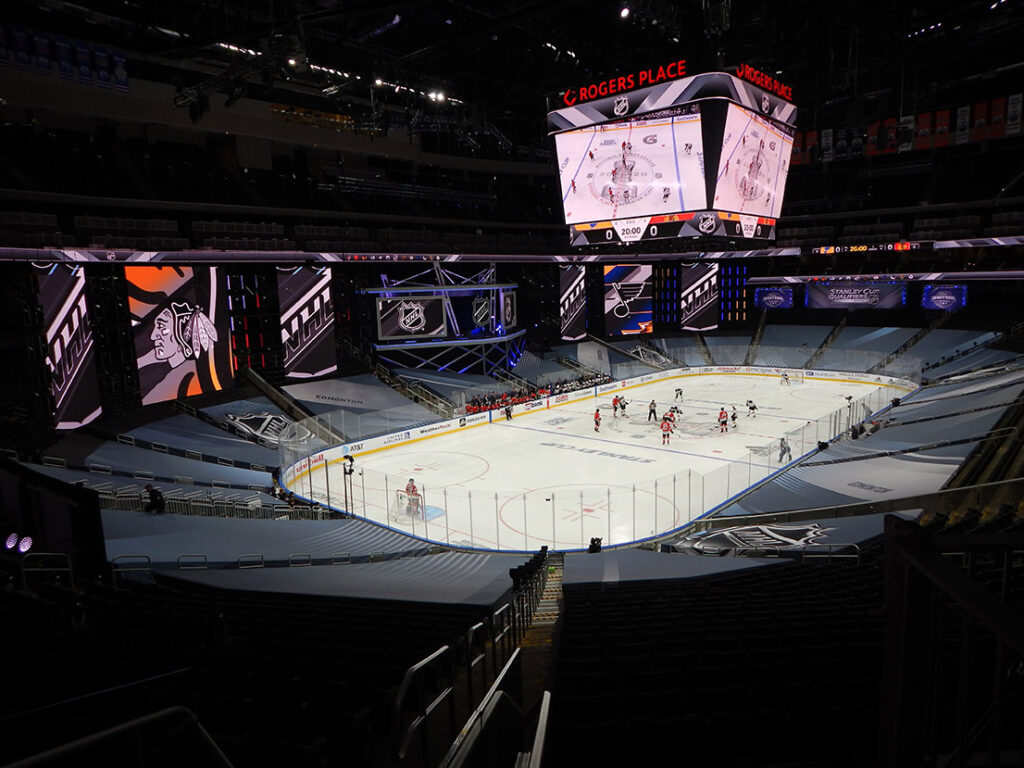While no major League had returned to play, we knew that this problem would be solved in a variety of different ways in the months ahead. Our goal was to produce the best answer for the National Hockey League. Knowing that fan energy has always been an integral part of the game experience, how could we replace it while enhancing the at-home fan experience?
To address the empty seats we covered the first ten rows with a graphic wrap, the light color of the graphic allowed the puck to stand out against the background. We added layers of Semi-Transparent screens, lighting towers, and built a central stage as an inconic backdrop for play. The screens provided the perfect canvas for content from teams and fans to activate the arena in between play, the lighting design further engergized the space and created hundreds of new looks that had never been possible for broadcast before.
Splitting 24 teams into two hub cities meant that we needed to design for two locations and make them as similar as possible on camera. This was no easy task as the two buildings were very different in layout and seating rake. Each production team faced different challenges based on location – in Toronto it was a lack of venue drawing information and rigging points – Edmonton was more remote which created difficulty for vendors to source materials and equipment.


This was unchartered territory for everyone involved. After weeks of working remotely we had set the final plans into motion – then we had to turn our attention to making sure the production environment would be as safe as possible. We traveled 19 supervisors to Canada to lead this effort on the ground, and have proven that with the right guidelines in place, production during Covid-19 is entirely possible.